Use the following information to calculate your answers to q
Use the following information to calculate your answers to questions 1 through 12.
The table below shows the results of a study on smoking and three illnesses. We are interested in determining if the proportions of smokers in the three categories are different from each other.
p1 = proportions of smokers with emphysema
p2 = proportions of smokers with heart problem
p3 = proportions of smokers with cancer
Question 1
Not yet answered
Marked out of 2.00
Flag question
Question text
Which of the following represents the null and alternative hypotheses in this case?
Select one:
a. Ho: p1 = p2 = p3 Ha: Not all population proportions are equal
b. Ho: p1 = p3 Ha: p3 = p2
c. Ho: p1 = p2 Ha: p2 = p3
d. Ho: p1 = p2 = p3 = ptotal Ha: Not all population proportions are equal
Question 2
Not yet answered
Marked out of 2.00
Flag question
Question text
The expected frequency of non-smokers with heart problem is
Select one:
a. 318
b. 96
c. 212
d. 144
e. 0.60
Question 3
Not yet answered
Marked out of 2.00
Flag question
Question text
The expected frequency of smokers with cancer is
Select one:
a. 96
b. 212
c. 144
d. 0.40
e. 318
Question 4
Not yet answered
Marked out of 2.00
Flag question
Question text
The expected frequency of non-smokers with emphysema is
Select one:
a. 318
b. 123
c. 96
d. 82
e. 0.40
Question 5
Not yet answered
Marked out of 2.00
Flag question
Question text
The expected frequency of smokers with emphysema is
Select one:
a. 82
b. 0.40
c. 96
d. 212
e. 123
Question 6
Not yet answered
Marked out of 2.00
Flag question
Question text
The chi-square value is
Select one:
a. 27.12
b. 1.52
c. 12.66
d. 1.01
e. 5.90
Question 7
Not yet answered
Marked out of 2.00
Flag question
Question text
With = 0.1, the critical X2 value is
Select one:
a. 10.645
b. 4.605
c. 6.251
d. 2.706
e. 9.236
Question 8
Not yet answered
Marked out of 2.00
Flag question
Question text
The conclusion is
Select one:
a. reject Ho since X2 is less than critical X2.
b. accept Ho since X2 is greater than critical X2.
c. No conclusion can be drawn.
d. reject Ho since X2 is greater than critical X2.
e. accept Ho since X2 is less than critical X2.
Question 9
Not yet answered
Marked out of 2.00
Flag question
Question text
P1 – P2 is
Select one:
a. 0.14
b. 0.097
c. 0.12
d. 5
e. –21
Question 10
Not yet answered
Marked out of 2.00
Flag question
Question text
P2 – P3 is
Select one:
a. 0.097
b. 0.017
c. 5
d. 0.082
e. 0.14
Question 11
Not yet answered
Marked out of 2.00
Flag question
Question text
CV23 is
Select one:
a. 0.017
b. 0.097
c. 5
d. 0.082
e. 0.14
Question 12
Not yet answered
Marked out of 2.00
Flag question
Question text
Using = 0.1, the conclusion of the pairwise comparison is
Select one:
a. emphysema vs heart problem & heart problem vs cancer are significant.
b. emphysema vs cancer & heart problem vs cancer are significant.
c. All pairwise comparisons are significant.
d. emphysema vs heart problem & emphysema vs cancer are significant.
e. None of the comparisons are significant.
| Emphysema | Heart Problem | Cancer | Total | |
| Smoker | 145 | 140 | 300 | 585 |
| Non-smoker | 60 | 100 | 230 | 390 |
| Total | 205 | 240 | 530 | 975 |
Solution
a. Ho: p1 = p2 = p3 Ha: Not all population proportions are equal
b)
240*390 / 975 = 96
b. 96
c)
The expected frequency of smokers with cancer is
530 *585 / 975 = 318
The expected frequency of non-smokers with emphysema is
390*205 / 975 = 82
The expected frequency of smokers with emphysema is
585*205 / 975 = 123
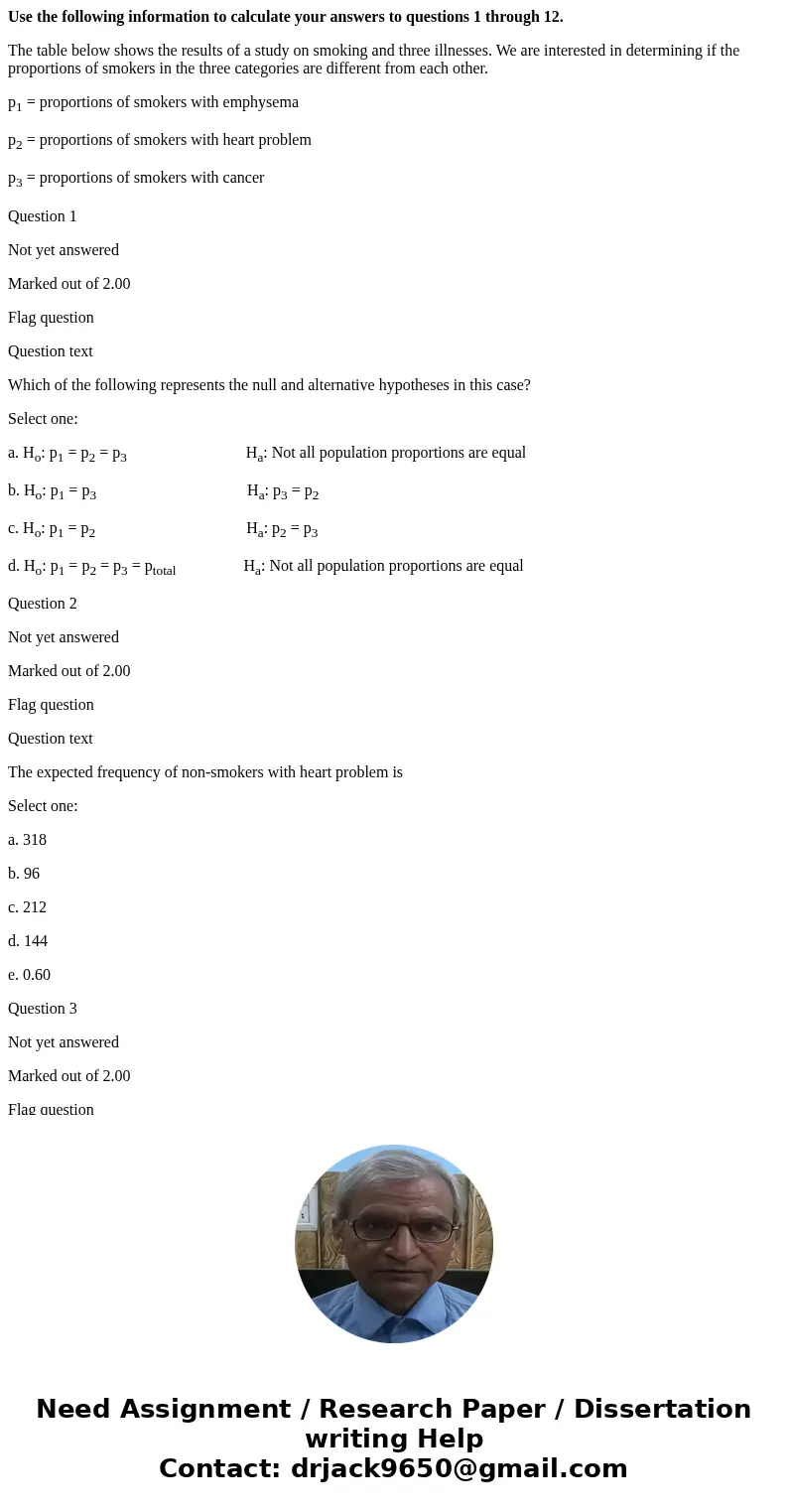
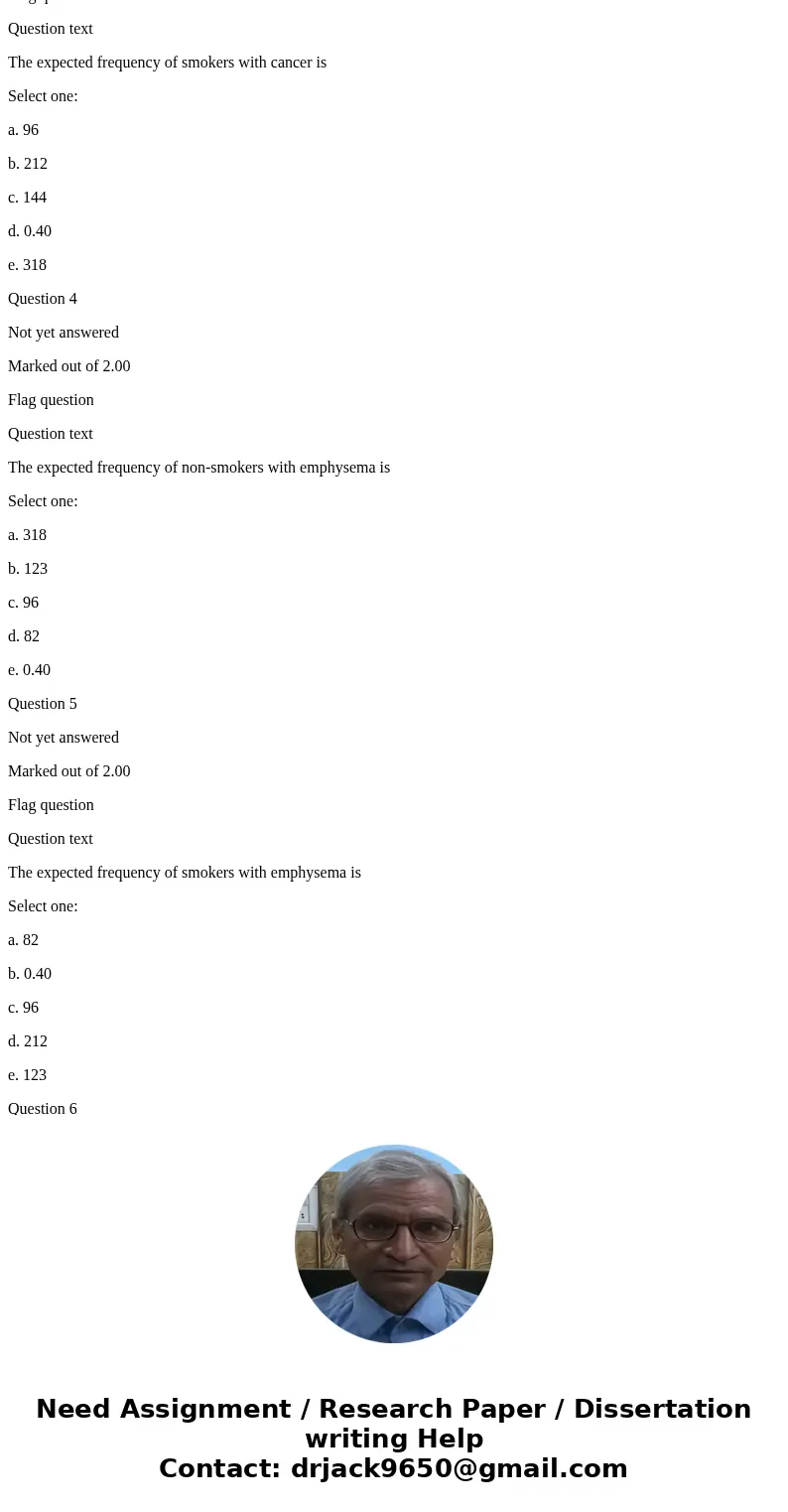
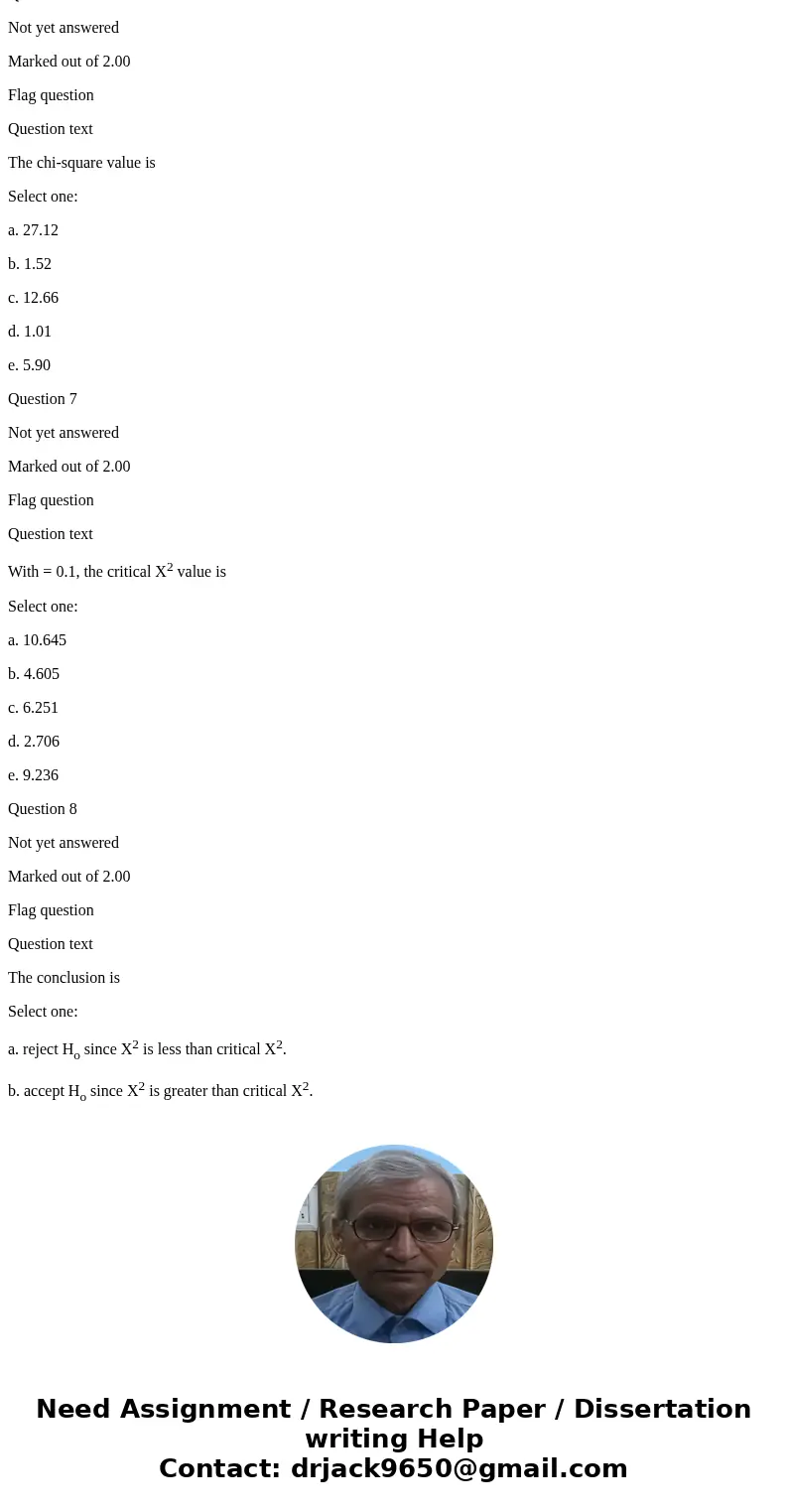
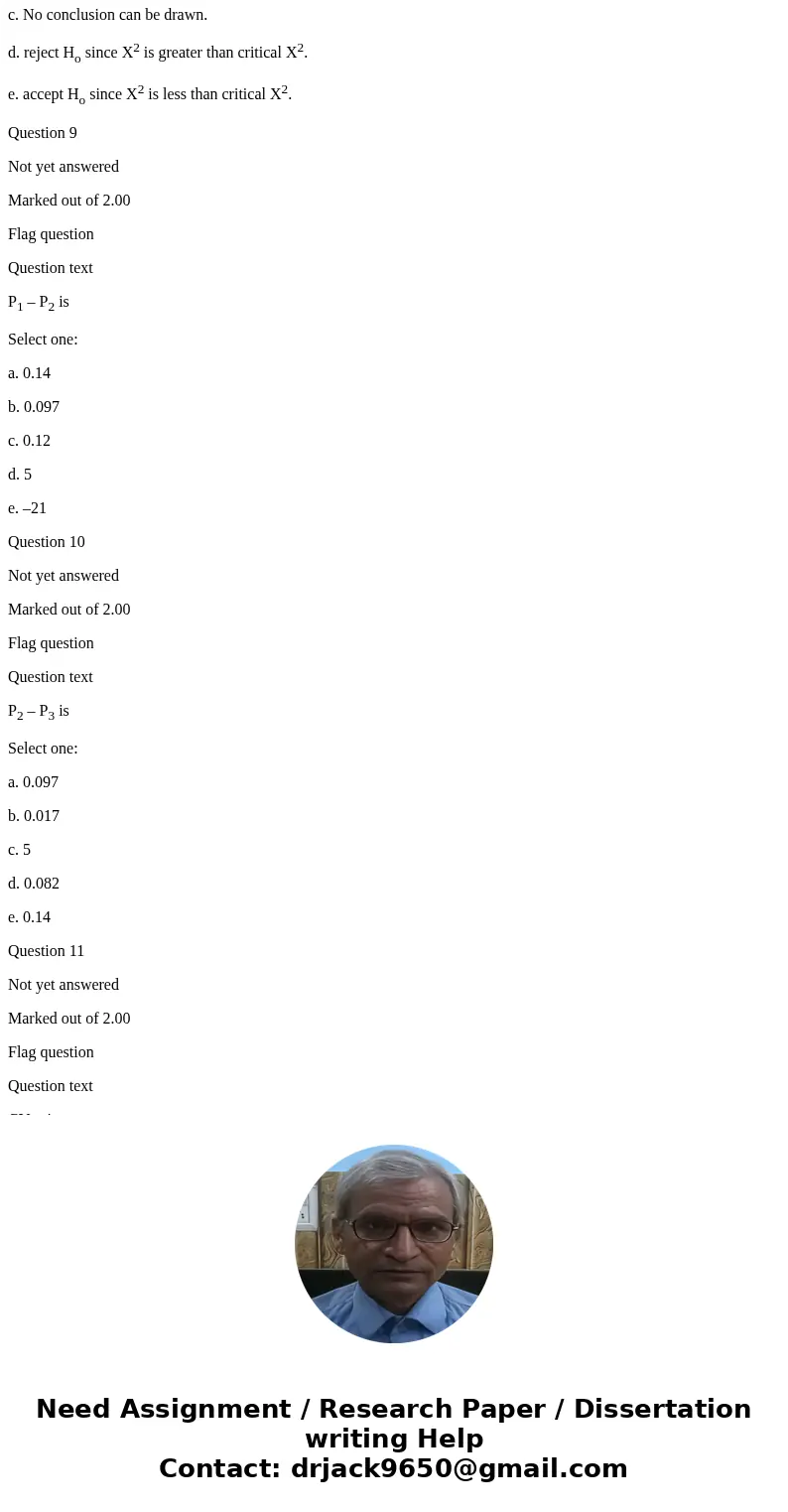
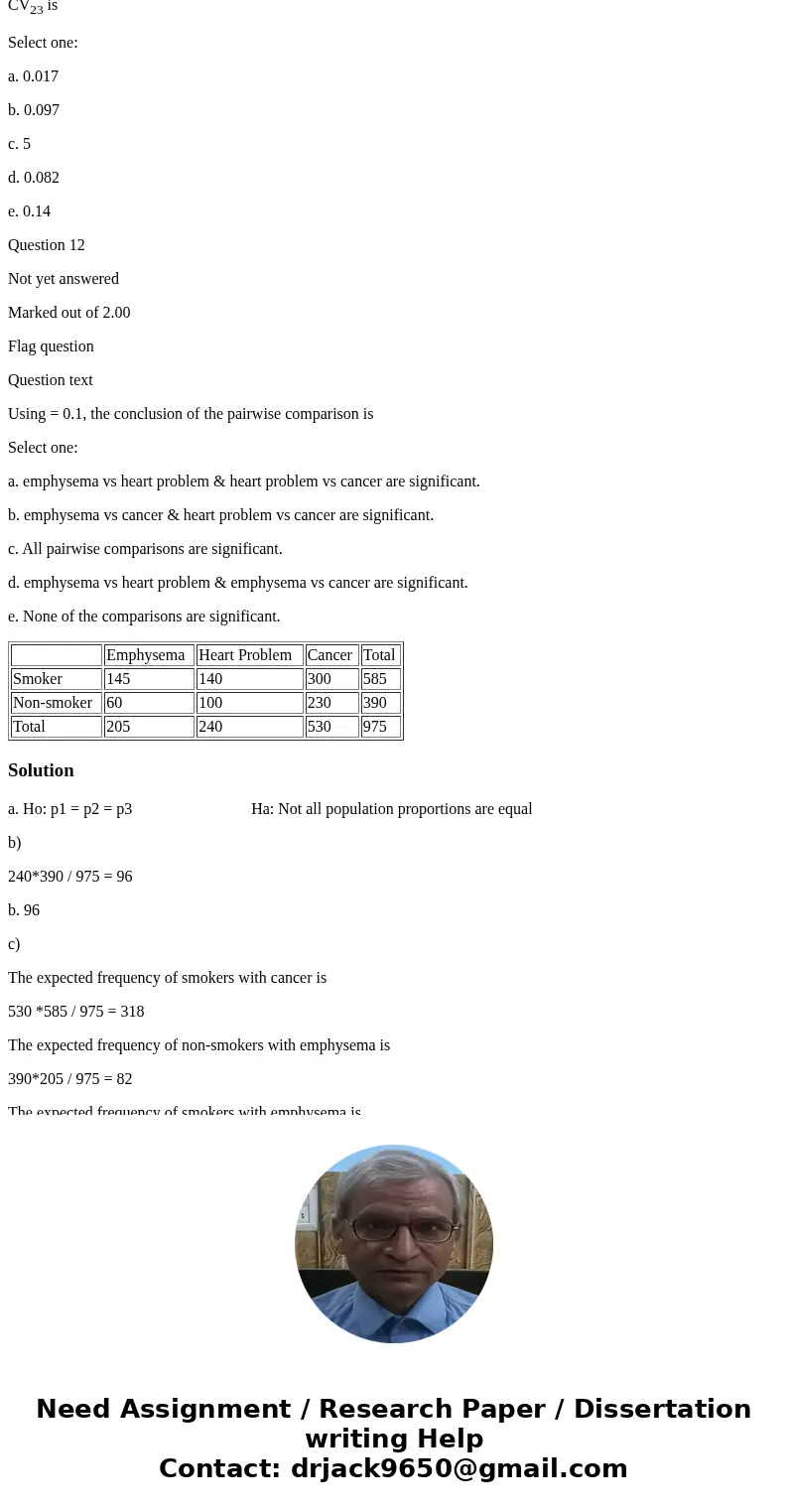
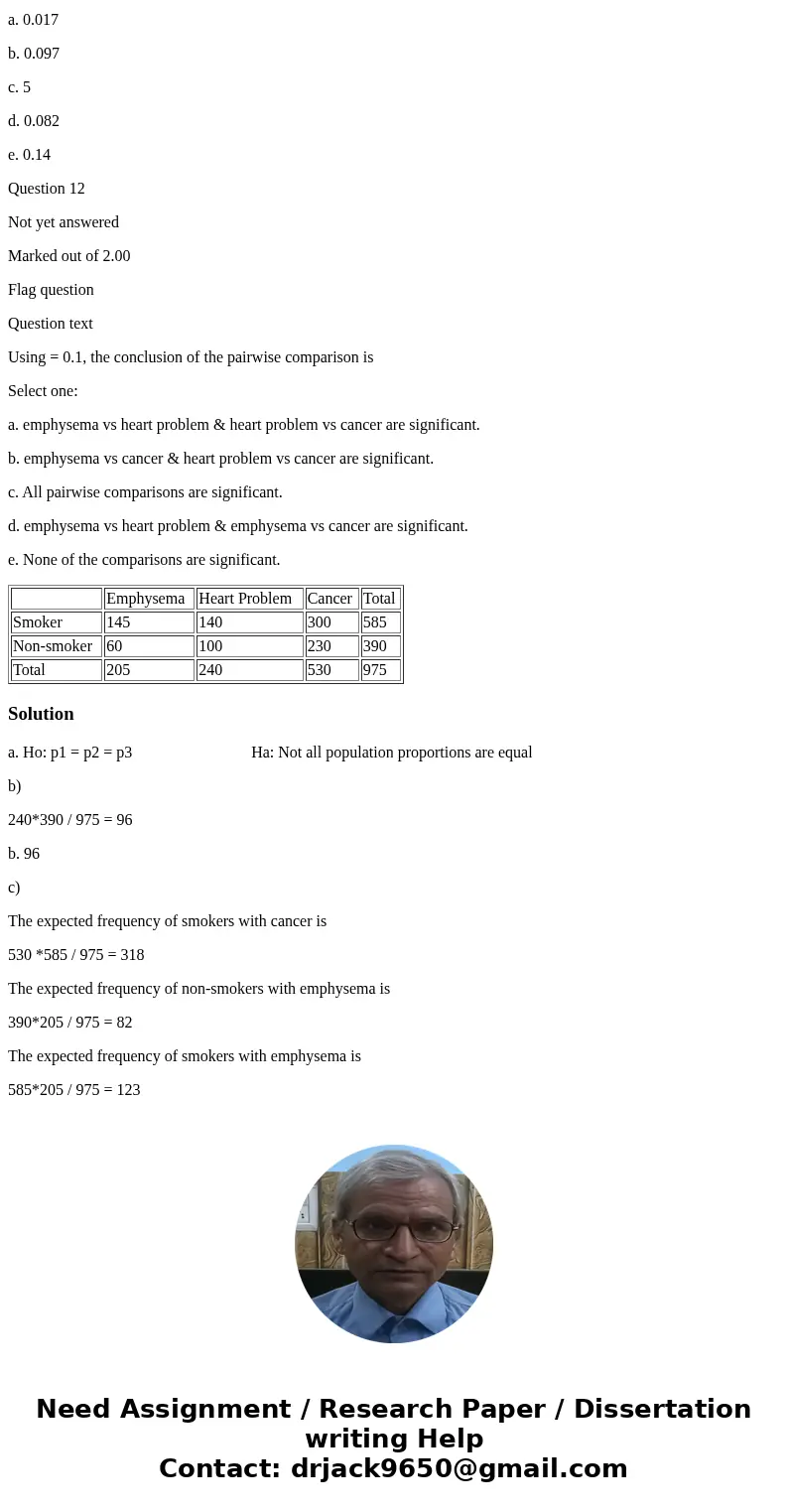
 Homework Sourse
Homework Sourse